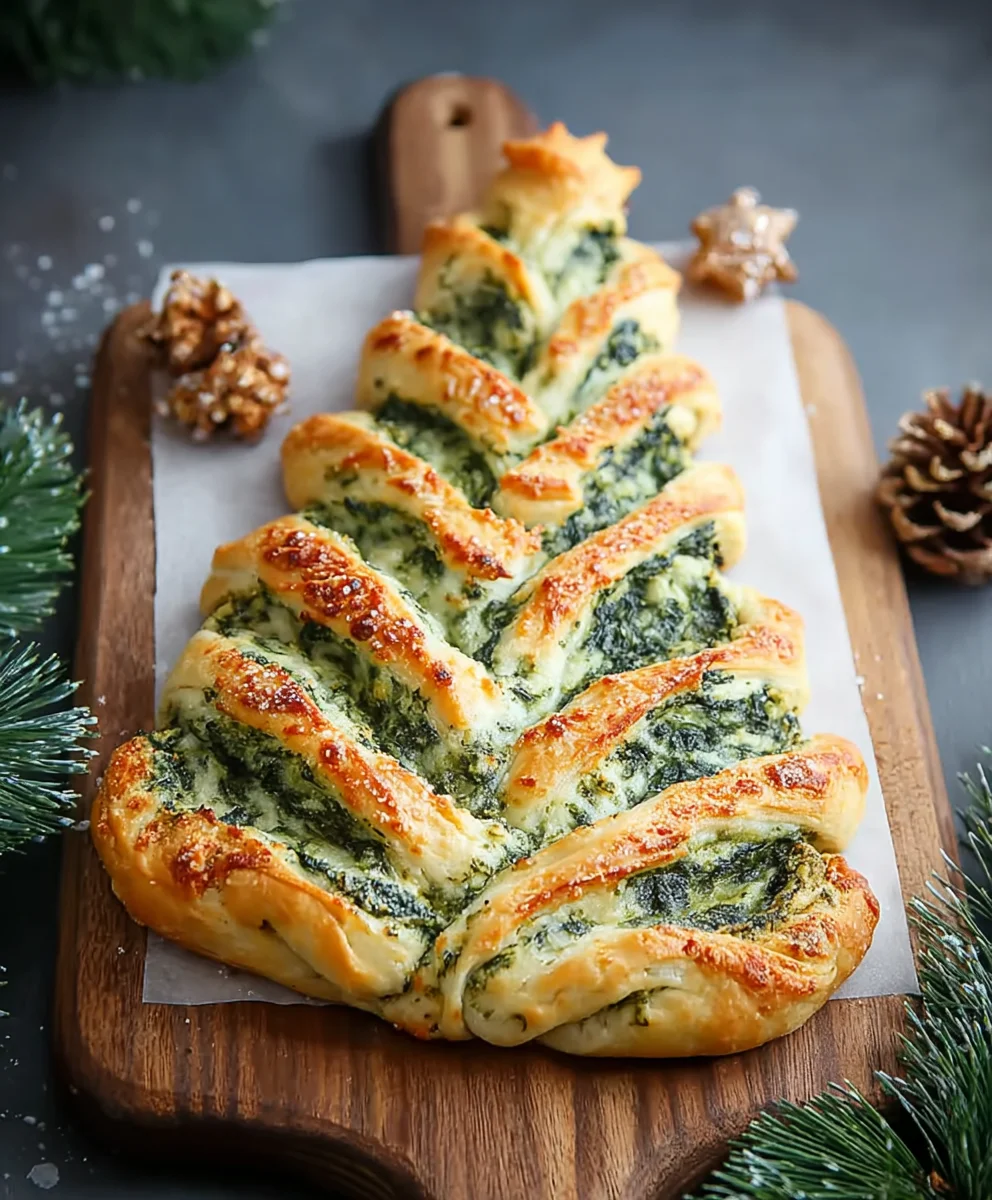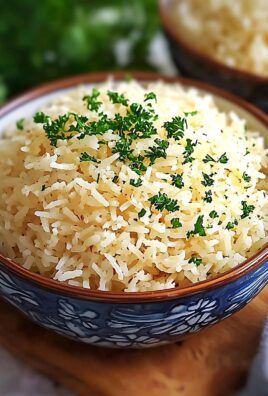Shrimp Etouffee, just the name conjures images of steamy bowls of rich, flavorful comfort, transporting your taste buds straight to the heart of Louisiana. I believe there’s something truly magical about a dish that can offer such a profound culinary experience with every spoonful.
Originating from the vibrant culinary traditions of Cajun and Creole kitchens, this iconic dish is more than just a meal; it’s a celebration of heritage. The word ‘étouffée’ itself means ‘to smother’ in French, perfectly describing the method of cooking seafood in a thick, savory roux-based sauce until it’s tender and bursting with flavor. This culinary masterpiece stands as a testament to the resourcefulness and creativity of Louisiana cooks, who transformed local ingredients into world-renowned cuisine.
The Irresistible Allure of Shrimp Etouffee
What makes this dish so universally adored? I find it’s the irresistible combination of succulent shrimp, enveloped in a luxurious, well-seasoned sauce – often with a subtle kick – served over a bed of fluffy white rice. The velvety texture, the deep savory flavor derived from a perfectly crafted roux, and the aromatic blend of the ‘holy trinity’ (onions, celery, and bell peppers) create an unforgettable symphony for the senses. It’s comforting, satisfying, and boasts a unique complexity that truly embodies soul food. Whether you’re new to Cajun cooking or a seasoned enthusiast, mastering a fantastic Shrimp Etouffee recipe is a rewarding culinary journey.
Ingredients:
- For the Roux:
- ½ cup vegetable oil (or other neutral oil like canola or grapeseed)
- ½ cup all-purpose flour
- The Holy Trinity & Aromatics:
- 1 large yellow onion, finely chopped
- 2 stalks celery, finely chopped
- 1 large green bell pepper, finely chopped
- 4 cloves garlic, minced
- Liquids:
- 4 cups shrimp stock (homemade is best, but good quality store-bought works)
- 1 cup water or chicken broth (optional, for thinning if needed)
- The Star: Shrimp:
- 2 pounds large raw shrimp, peeled and deveined (tails on or off, your preference)
- Seasonings & Flavor Boosters:
- 2 tablespoons Cajun seasoning (adjust to your preferred spice level, ensure it’s salt-free or adjust salt accordingly)
- ½ teaspoon cayenne pepper (or more, if you like extra heat)
- 2 bay leaves
- 1 teaspoon dried thyme
- 1 teaspoon dried oregano
- ½ teaspoon black pepper
- Salt to taste (start with ½ teaspoon, add more as needed)
- 1 teaspoon Worcestershire sauce
- ½ teaspoon hot sauce (like Tabasco or Crystal, adjust to taste)
- For Garnish & Serving:
- ½ cup fresh green onions, sliced (green parts only)
- ¼ cup fresh parsley, chopped
- Cooked white rice, for serving
Prepping Your Mise en Place
- Prepare the Vegetables: Before you even think about turning on the stove, get all your vegetables ready. Finely chop the onion, celery, and bell pepper. This trio is often called the “holy trinity” in Cajun and Creole cooking, and it forms the aromatic backbone of our dish. Mince your garlic as well. Having everything prepped and measured out, what chefs call “mise en place,” will make the cooking process much smoother and prevent any last-minute scrambling, especially when you’re making a roux.
- Peel and Devein Shrimp: If your shrimp aren’t already prepared, take the time to peel and devein them. You can leave the tails on for presentation, or remove them if you prefer. A little tip here: if you’re feeling ambitious, save the shrimp shells! You can simmer them with some water, a quartered onion, and a few celery stalks for about 20-30 minutes to make a wonderfully flavorful homemade shrimp stock. This will seriously elevate your étouffée. Otherwise, have your store-bought shrimp stock ready.
- Measure Out Seasonings: Combine your Cajun seasoning, cayenne pepper, dried thyme, dried oregano, and black pepper in a small bowl. This way, they’ll be ready to add to the pot at just the right moment.
Crafting the Perfect Roux
The roux is the heart and soul of any good étouffée. It’s what gives the dish its rich flavor, deep color, and luxurious thick consistency. Don’t rush this step – patience is key to a successful roux!
- Heat the Oil: In a large, heavy-bottomed pot or Dutch oven, heat the ½ cup of vegetable oil over medium heat until it shimmers. A heavy-bottomed pot is crucial here as it distributes heat evenly and helps prevent scorching.
- Whisk in Flour: Once the oil is hot, gradually whisk in the ½ cup of all-purpose flour. Keep whisking constantly to create a smooth paste. This is the beginning of our roux.
-
Cook the Roux Slowly: Reduce the heat to medium-low and continue to stir the roux constantly. I prefer a flat-bottomed wooden spoon for this, as it allows me to scrape the bottom and sides of the pot effectively, preventing sticking and burning. This process can take anywhere from 15 to 30 minutes, depending on how dark you want your roux.
- Initially, the roux will be a pale blonde color, like sand. As it cooks, it will deepen in color.
- We’re looking for a color similar to peanut butter, or even a milk chocolate hue. Be careful not to burn it! If you see any black flecks or smell a burnt aroma, unfortunately, you’ll need to start over, as a burnt roux will impart a bitter taste to your entire dish.
- The darker the roux, the nuttier and more complex its flavor, but also the less thickening power it has. For étouffée, a medium to dark peanut butter color is usually ideal – it provides great flavor and still thickens beautifully.
The Importance of Constant Stirring
This isn’t just a suggestion, it’s a command! Leaving your roux unattended for even a minute can result in burning, especially as it darkens. Your arm might get a little tired, but trust me, it’s worth the effort for that incredible depth of flavor.
Building the Flavor Base: Aromatics and Seasoning
Once your roux is perfect, it’s time to build the layers of flavor that make étouffée so irresistible.
- Add the Holy Trinity: Once your roux has reached your desired color, immediately add the chopped onion, celery, and bell pepper to the pot. The residual heat from the roux will help to sauté them. Stir constantly for about 7-10 minutes, or until the vegetables have softened significantly and become translucent. They will absorb some of the roux and release their wonderful aromas.
- Introduce Garlic and Seasonings: Now, add the minced garlic and your pre-measured seasoning blend (Cajun seasoning, cayenne, dried thyme, dried oregano, and black pepper). Cook for another 1-2 minutes, stirring continuously. You’ll notice the spices becoming incredibly fragrant. Be careful not to burn the garlic! It cooks quickly and can turn bitter if overcooked.
Simmering the Sauce to Perfection
With our aromatic base complete, it’s time to transform it into the rich, velvety sauce that cradles our shrimp.
- Pour in Shrimp Stock: Gradually pour in the 4 cups of shrimp stock, a little at a time, whisking constantly to prevent lumps. The mixture will seize up and become very thick at first, but keep whisking, and it will smooth out into a beautiful, homogenous sauce. This is a crucial step to ensure a smooth étouffée.
- Add Bay Leaves and Bring to a Simmer: Once all the stock is incorporated and the sauce is smooth, add the 2 bay leaves. Bring the mixture to a gentle simmer, then reduce the heat to low.
- Slow Simmer for Flavor Development: Let the étouffée base simmer gently, uncovered, for at least 30-45 minutes. Stir occasionally to prevent sticking. During this simmering time, the flavors will meld and deepen, and the sauce will thicken beautifully. This is where the magic happens! The longer it simmers (within reason), the more robust and delicious your étouffée will become. If it becomes too thick, you can add a little water or chicken broth, a quarter cup at a time, until it reaches your desired consistency. It should be thick enough to coat the back of a spoon, but still pourable.
Adding the Star: Shrimp
The shrimp are a delicate addition, and timing is everything to ensure they are perfectly cooked and tender, not tough.
- Prepare for Shrimp: After the sauce has simmered and developed its rich flavor and consistency, taste it and adjust the salt if necessary. Remember, Cajun seasoning often contains salt, so be mindful when adding more. Add the Worcestershire sauce and hot sauce now. These add a wonderful layer of umami and a subtle tang that really brightens the dish.
- Add the Shrimp: Increase the heat slightly to maintain a gentle simmer. Add the peeled and deveined shrimp directly into the simmering sauce. Stir gently to ensure they are fully submerged.
- Cook Just Until Pink: Cook the shrimp for only 3-5 minutes, or just until they turn pink and opaque. Be very careful not to overcook them! Overcooked shrimp become rubbery and tough. As soon as they are perfectly cooked, remove the pot from the heat. The residual heat will continue to cook them slightly.
Finishing and Serving Your Etouffee
A few final touches and your authentic Shrimp Etouffee will be ready to impress!
- Final Adjustments: Remove the bay leaves from the pot. Give the étouffée one last taste test. Does it need more salt? A little more cayenne for heat? A dash more hot sauce? This is your chance to customize it perfectly to your palate.
- Garnish: Stir in about half of the sliced green onions and chopped fresh parsley into the étouffée. These fresh herbs add a vibrant burst of color and flavor that really finishes the dish.
- Serve Immediately: Ladle your delicious Shrimp Etouffee generously over a bed of fluffy white rice. Garnish each serving with the remaining fresh green onions and parsley. The contrast of the rich, savory étouffée with the plain rice is simply divine.
Enjoy Your Culinary Creation!
This dish is truly a labor of love, but the depth of flavor you achieve is absolutely unparalleled. Sharing a homemade Shrimp Etouffee is a fantastic way to bring the warmth and spirit of Louisiana cooking right into your home. It’s perfect for a cozy family dinner or for entertaining friends.
Leftovers (if you have any!) store beautifully in an airtight container in the refrigerator for up to 3 days. Reheat gently on the stovetop, adding a splash of stock or water if it’s thickened too much.
I hope you love making and eating this Shrimp Etouffee as much as I do! It’s a classic for a reason.

Conclusion:
Well, my friends, we’ve journeyed through the spices and steps, and now we stand at the threshold of a truly magnificent culinary experience. I hope you’re as excited as I am about what you’re about to create!
This isn’t just another dish; it’s a celebration, a testament to the rich, vibrant flavors that dance in the heart of Louisiana cooking. What makes this particular Shrimp Etouffee an absolute must-try, you ask? It’s the perfect harmony of the robust, savory roux that forms the backbone of the sauce, combined with the sweet, succulent plumpness of fresh shrimp. Every spoonful is an explosion of taste – a delicate heat that warms your palate without overwhelming it, layered with the aromatic trinity of celery, bell peppers, and onions, all simmering together to create a depth of flavor that is simply unparalleled. I promise you, once you taste that velvety, spicy sauce clinging to perfectly cooked shrimp, you’ll understand why this recipe holds such a special place in my kitchen and, I believe, will soon hold one in yours too. It’s comforting, it’s soulful, and it’s surprisingly approachable, even for those who might be new to the art of roux-making. The effort, which is more about patience than complexity, is rewarded tenfold with a dish that tastes like it came straight from a New Orleans culinary institution. You’ll be amazed at the restaurant-quality meal you can produce right in your own home, bringing an authentic taste of the Bayou to your dinner table. It’s a truly unforgettable experience that will transport your taste buds straight to the heart of Cajun country.
Now, let’s talk about how to truly complete this masterpiece. While a generous scoop of fluffy, long-grain white rice is the traditional and undeniably perfect companion for your etouffee, allowing it to soak up every drop of that incredible sauce, don’t feel limited! For a touch of rustic charm, consider serving it alongside some warm, crusty French bread or a batch of homemade cornbread; these are fantastic for mopping up any leftover sauce, ensuring not a single drop of that flavorful goodness goes to waste. If you’re looking to add a fresh counterpoint to the richness, a simple side salad with a light vinaigrette can be a wonderful addition, cutting through the intensity and offering a refreshing bite. Or, for an even heartier meal, some steamed greens like collards or mustard greens, seasoned with a hint of ham hock or smoked turkey, could elevate the experience to a true Southern feast. I often find myself enjoying it with a sprinkle of fresh, chopped green onions or parsley right before serving; it adds a vibrant color and a burst of fresh flavor that brightens the whole dish. Don’t forget a cold glass of sweet tea or a crisp lager to complete the authentic Southern dining experience! And for those who enjoy a little extra kick, a dash of your favorite hot sauce at the table is always a welcome guest.
But here’s where the fun really begins – making this recipe your own! While the classic Shrimp Etouffee is divine, don’t hesitate to experiment with variations to suit your taste or what you have on hand. For example, if you’re not a fan of shrimp, or simply want to explore other proteins, this etouffee base is incredibly versatile. You could easily swap out the shrimp for crawfish (making it a true crawfish etouffee!), or even use chicken, sausage, or a mix of seafood like scallops and white fish. Just adjust cooking times accordingly to ensure your chosen protein is cooked to perfection. For those who love an extra fiery kick, feel free to amp up the cayenne pepper or add a few dashes of a habanero-based hot sauce during cooking. On the flip side, if you prefer a milder flavor, you can reduce the amount of cayenne or opt for a sweet paprika instead. You can also play with vegetables; adding sliced okra, diced tomatoes, or even some corn kernels can introduce new textures and flavors to the dish. Don’t be afraid to get creative! This recipe is a fantastic foundation, and with a little imagination, you can tailor it to become your signature etouffee. Perhaps you’ll add a splash of white wine to the sauce for a different layer of acidity, or incorporate some bell peppers of various colors for a more vibrant presentation. The possibilities are truly endless, and each variation simply broadens the enjoyment of this incredible dish, making it uniquely yours.
So, my dear home cooks, now that you have all the knowledge and inspiration, there’s only one thing left to do: get into your kitchen and make this spectacular recipe! I truly believe that once you try this, you’ll find it becomes a cherished part of your culinary repertoire. And when you do, please don’t keep your success a secret! I absolutely adore hearing about your cooking adventures. Share your photos, your triumphs, and even your own personal twists in the comments below or tag us on social media. Tell me what you loved most about it, what variations you tried, and who you shared it with. Your feedback and creativity inspire not just me, but our entire community of food lovers. Don’t hesitate – your amazing culinary journey with Shrimp Etouffee starts now! Happy cooking, and I can’t wait to see your amazing creations!

Best Homemade Shrimp Etouffee – Authentic Cajun Taste!
Shrimp Etouffee is a rich, flavorful Cajun and Creole dish, where succulent shrimp are smothered in a luxurious, well-seasoned, roux-based sauce, often with a subtle kick, served over fluffy white rice. It’s a celebration of heritage, embodying soul food with its velvety texture, deep savory flavor, and aromatic blend of the ‘holy trinity’ (onions, celery, bell peppers).
Ingredients
-
½ cup vegetable oil
-
½ cup all-purpose flour
-
1 large yellow onion, finely chopped
-
2 stalks celery, finely chopped
-
1 large green bell pepper, finely chopped
-
4 cloves garlic, minced
-
4 cups shrimp stock
-
1 cup water or chicken broth (optional)
-
2 pounds large raw shrimp, peeled & deveined
-
2 tbsp Cajun seasoning
-
½ tsp cayenne pepper
-
2 bay leaves
-
1 tsp dried thyme
-
1 tsp dried oregano
-
½ tsp black pepper
-
½ tsp salt (or to taste)
-
1 tsp Worcestershire sauce
-
½ tsp hot sauce
-
½ cup fresh green onions, sliced
-
¼ cup fresh parsley, chopped
-
Cooked white rice, for serving
Instructions
-
Step 1
Finely chop the onion, celery, and bell pepper (the holy trinity) and mince the garlic. Peel and devein shrimp. Combine Cajun seasoning, cayenne pepper, dried thyme, dried oregano, and black pepper in a small bowl. -
Step 2
In a heavy-bottomed pot, heat ½ cup oil over medium heat until shimmering. Gradually whisk in ½ cup flour to form a smooth paste. Reduce heat to medium-low and stir constantly for 15-30 minutes, achieving a peanut butter to milk chocolate color. Do not burn. -
Step 3
Immediately add the chopped onion, celery, and bell pepper to the roux. Stir for 7-10 minutes until softened. Stir in minced garlic and the seasoning blend for 1-2 minutes until fragrant, being careful not to burn the garlic. -
Step 4
Gradually whisk in 4 cups shrimp stock until the sauce is smooth. Add bay leaves. Bring to a gentle simmer, then reduce heat to low. Simmer uncovered for 30-45 minutes, stirring occasionally, allowing flavors to meld and the sauce to thicken. Add optional water or chicken broth if needed for desired consistency. -
Step 5
Taste sauce and adjust salt; stir in Worcestershire sauce and hot sauce. Increase heat slightly to maintain a gentle simmer. Add shrimp and cook for only 3-5 minutes, just until they turn pink and opaque. Remove from heat immediately to prevent overcooking. -
Step 6
Remove bay leaves. Stir in half of the sliced green onions and chopped fresh parsley. Ladle your Shrimp Etouffee generously over a bed of fluffy white rice. Garnish each serving with the remaining green onions and parsley.
Important Information
Nutrition Facts (Per Serving)
It is important to consider this information as approximate and not to use it as definitive health advice.
Allergy Information
Please check ingredients for potential allergens and consult a health professional if in doubt.




Leave a Comment